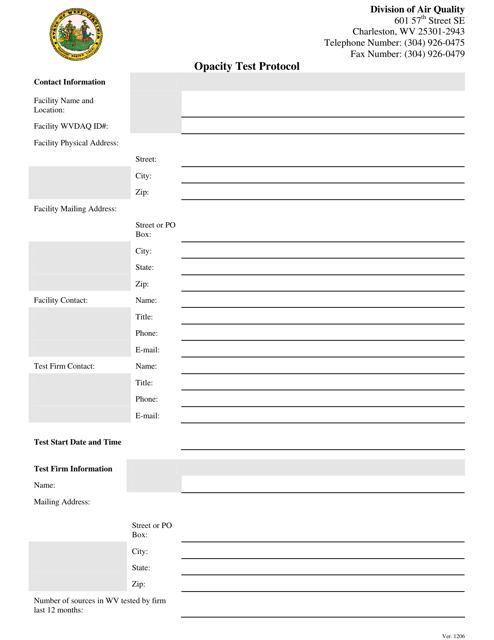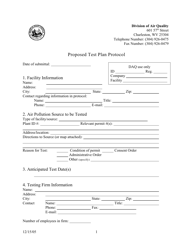Opacity Test Protocol - West Virginia
Opacity Test Protocol is a legal document that was released by the West Virginia Department of Environmental Protection - a government authority operating within West Virginia.
FAQ
Q: What is the opacity test protocol for West Virginia?
A: The opacity test protocol for West Virginia is a set of guidelines and procedures used to measure the opacity (or cloudiness) of emissions from industrial sources.
Q: Why is opacity testing important?
A: Opacity testing is important to ensure compliance with air quality standards and to assess the environmental impact of industrial emissions.
Q: Who conducts opacity testing in West Virginia?
A: Opacity testing is usually conducted by trained personnel from the West Virginia Department of Environmental Protection or other authorized agencies.
Q: What equipment is used for opacity testing?
A: Opacity testing is typically conducted using specialized instruments called opacity meters or smoke meters.
Q: Are there specific regulations for opacity limits in West Virginia?
A: Yes, West Virginia has specific regulations that set limits on the maximum allowable opacity levels for different types of industrial sources.
Q: What happens if a source exceeds the opacity limit?
A: If a source exceeds the opacity limit, it may be subject to penalties and enforcement actions, such as fines or mandated emission reduction measures.
Form Details:
- Released on June 1, 2012;
- The latest edition currently provided by the West Virginia Department of Environmental Protection;
- Ready to use and print;
- Easy to customize;
- Compatible with most PDF-viewing applications;
- Fill out the form in our online filing application.
Download a printable version of the form by clicking the link below or browse more documents and templates provided by the West Virginia Department of Environmental Protection.







